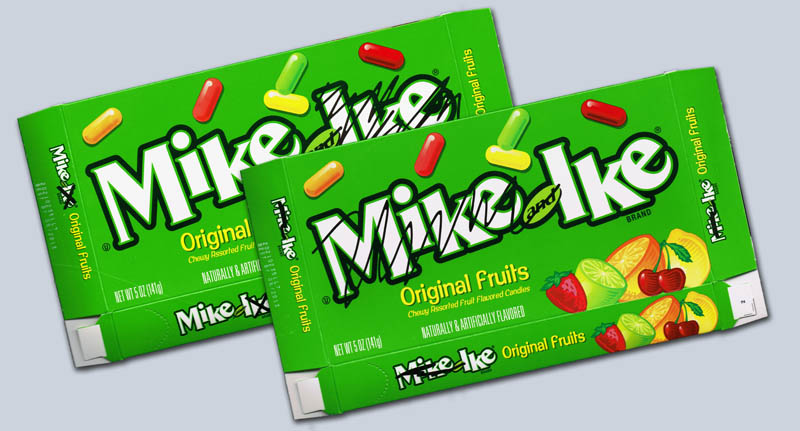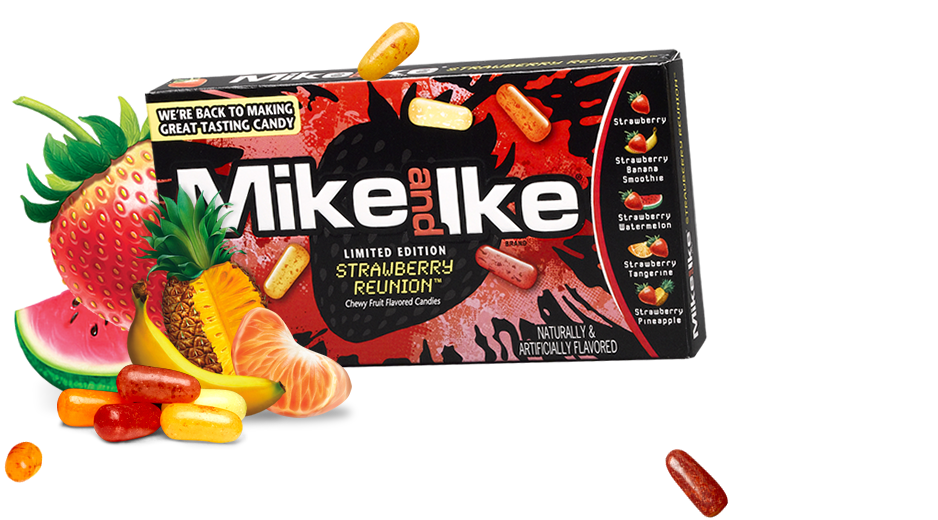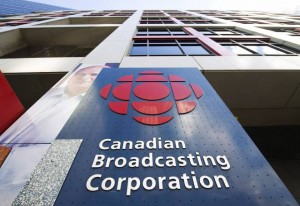For anybody unfamiliar with the Mike and Ike story, for over a year now the popular candy has been engaged in an extensive marketing campaign aimed at re-branding their product. Since April of 2012 Just Born (the owners of the Mike and Ike brand) has been running a social campaign- posting stories about Mike and Ike’s breakup on Facebook, Twitter and various blogging sites.
The reason for the duo’s split was down to ‘creative differences’ after the pair couldn’t agree on new flavours and packaging for the candy. Mike was leaving to focus on his music career (his debut single entitled “Strawberry or Die”) while Ike now had the time to focus on his art. The somewhat controversial twist of the pair also filing for gay divorce made the break up even more intriguing and the story was picked up by various media outlets like the John Stewart show- which only added to the story’s popularity. Viral videos (that continue to upload) on YouTube, as well as the Mike and Ike movie added to the hype surrounding the candy duo’s comeback and made the product re-launch a massive success.

Traffic to the Just Born social media sites (and website) has more than tripled since last year and the brand now has over 1 million fans on Facebook. Just Born has also reported a 7.2% increase in sales- the largest in the brand’s history.
The pillars of the campaign were set primarily in:
-
The Packaging (or the Physical)- This let people know the campaign was for real. The physical aspect of Mike sometimes being scribbled out on boxes of the candy and other times Ike being so reinforced the story being told and made people question if this was for real.
-
The Digital- the ability for the brand’s audience to engage with the story in the form of a the two-way dialogue between the brand and it’s audience was crucial to the campaigns success. Leveraging the power of Social media not only built a following, it kept the audience engaged and turned customers into fans.
For me this campaign not only highlights vital considerations for re-inventing brands, it also offers a blueprint on how to do it. Firstly, it shows just how important social media is- to the re-branding process and to an organisation’s digital strategy. It also shows how important it is to the customer (i.e. the brand’s audience).
Let’s take a closer look at this story and while doing so you might consider how you could apply these steps to your re-branding process:
-
Create an engaging brand narrative that is captivating or humorous (or both) to your target audience.
-
Identify the best ways to engage that audience with the narrative. Between Facebook, Twitter, YouTube and various blogging sites it is likely that the market for Mike and Ike candy engaged with this campaign at some point in time.
-
Decide on the story, decide on the media AND STICK TO IT! The Mike and Ike story has been running for over a year now. Sometimes businesses expect social media to work miracles instantly- and sometimes it can- but more often than not it requires work. This doesn’t mean you can’t eventually become as successful as some of the bigger brands out there (case in point here) and build a sizeable following that actually engages with your product. After all it’s not just likes and shares we are looking for, but rather potential clients and fans.
-
Find out who is popular in your target audience’s circles. Make use of endorsements from celebrities, symbols or figures who can reach a wider audience. In this case, rapper/producer Nelly along with NBA basketball player Lamar Odom were included in the campaign to identify with a specific type of audience. This attached meaning to the story and again added to its intrigue and its humour.
-
REWARD LOYALTY. As a way of ensuring that Mike and Ike’s new found popularity lasted and translated into increased sales, the brand introduced a new flavour- “strawberry reunion”. They are also rewarding customers for their engagement over the past year with numerous special offers, promotions and interactive games on their website and Facebook page. This is an important note that is sometimes overlooked; just because a campaign is “over” it should never really end (especially one as successful as this). Now that you have done all this hard work and increased your traffic (and hopefully your sales), sustain it’s success as long as possible and use it to get started on the next big thing! Just like products, campaigns also have a life cycle.

The Mike and Ike campaign is not the only successful re-branding story that utilized the power of an integrated digital and social strategy. If you have any others we would love to hear them!
 POPULATION
POPULATION
 NEWSPAPERS
NEWSPAPERS